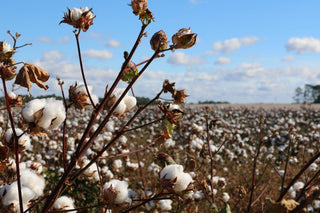Certified organic cotton is cotton fiber that has been grown without pesticides and fertilizers, through a process that preserves biodiversity, biological cycles and the soil well-being. The world’s leading producers of organic cotton are India, China and Turkey.
Although the process of cultivation of organic cotton is “cleaner” since it does not use chemical additives in fertilization and fumigation, both this crop and the conventional cotton harvesting process use excessive amounts of water and energy.
Organic cotton is cultivated through practices that generate a minimum-to-low impact on the environment. Toxic herbicides and insecticides or any kind of chemical fertilizers are not applied to plants or soil. In the traditional crop, they are applied and these toxins are harmful to not only the health of the farmers and workers involved in the crop and in the harvest, but also for the adjacent natural ecosystems.
Cotton fabrics certified by BCI guarantee ethical and responsible conditions in their cultivation and harvesting process: optimal working conditions for their production and the preservation of the environment of the growing areas. Better Cotton Initiative – BCI is a non-profit organization that generates, monitors and controls global standards and the complex cotton supply chain, from farmers to fashion retailers.
Recycled cotton can be generally defined as converting cotton fabric into cotton fiber that can be reused in textile products. Recycled cotton is also commonly referred to as regenerated cotton, reclaimed cotton or shoddy.
There are two primary sources that generate recycled cotton from textiles:
Post-industrial or Pre-consumer: These are the remains of yarns and fabrics that are discarded in the process of cutting and making clothing, home textiles and other fashion accessories.
Post-consumption: includes garments, upholstery, towels, used household items, whose cotton fibers will be reused in the development of a new product.

The largest amount of recycled cotton is generated through pre-consumer waste. What originates from post-consumption is much more difficult to classify and reprocess due to the variety of colors involved, the mix of fibers that make up the fabric, the rest of the raw materials and accessories present in the garments and it is a process that involves more work and a higher cost.
The objective is to recycle fiber from the fabric scraps directly. Regenerated cotton is produced through a recycling process that is mostly mechanical. In the first step, fabrics and materials are sorted by color. After this separation, the fabrics go through a machine that shreds the fabric into yarn and then into crude fiber. In this part of the process, a lot of tension is put on the fiber; during this shredding process, it is very easy for the fibers to break and become entangled. The raw fiber obtained is spun back into bobbins to be reused in the production of other garments and accessories. The quality of the recycled fiber obtained by this process will never get the same quality values as the original fiber, it feels different and looks different because it is different.
In conclusion, recycled cotton has the potential to greatly reduce water and energy consumption in the fashion industry. The amount of water needed is less than the amount used to grow and generate virgin cotton. Many products are diverted from what would be their inevitable and ultimate destination of landfills. Recycled cotton can be given new life in many different elements such as towels, bedding, clothing and even insulation for homes.


